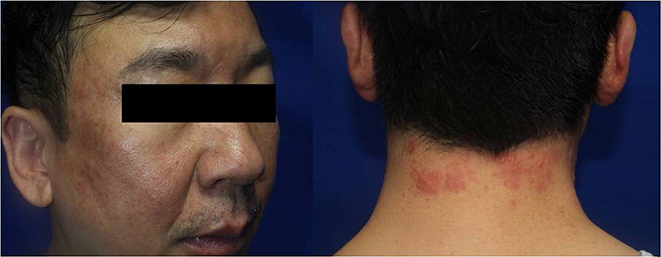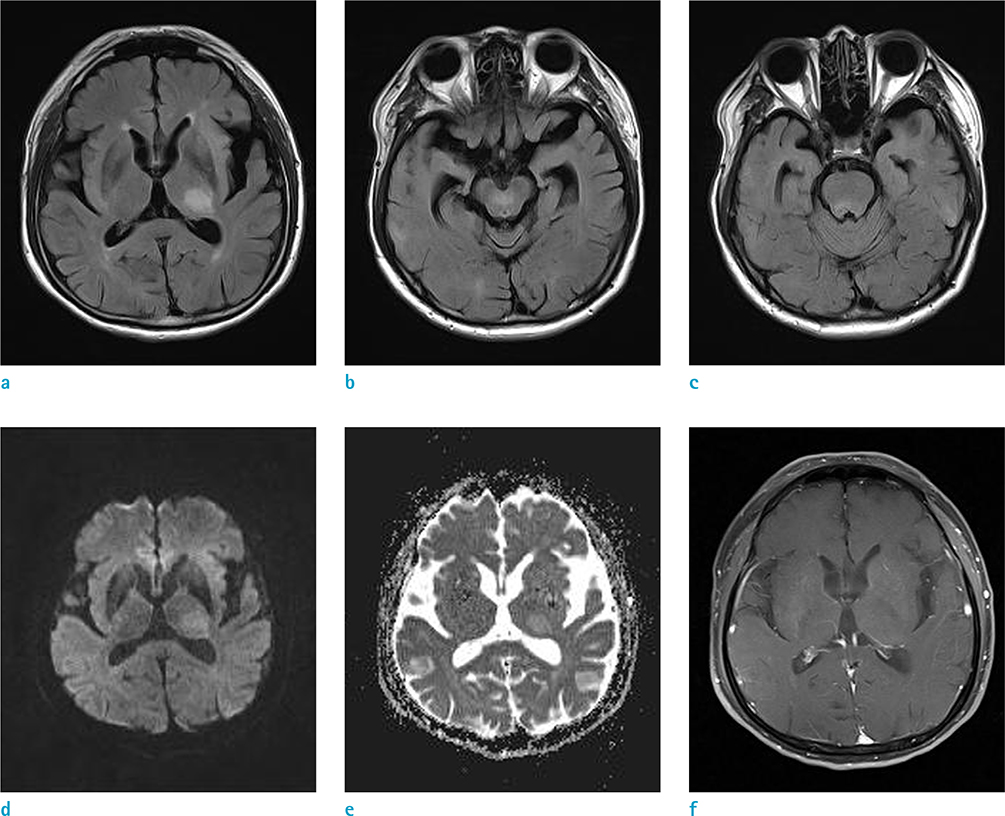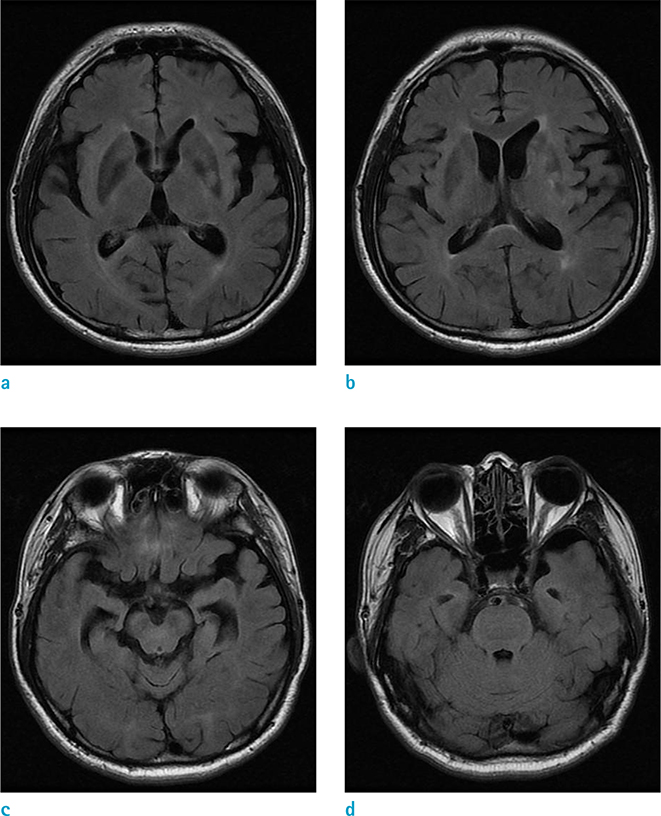Investig Magn Reson Imaging.
2018 Sep;22(3):187-193. 10.13104/imri.2018.22.3.187.
Recurrent Neuro-Sweet Disease Associated with Preceding Upper Respiratory Infection: a Case Study
- Affiliations
-
- 1Department of Radiology, Pusan National University Hospital, Pusan National University School of Medicine and Medical Research Institute, Busan, Korea. hakjink@pusan.ac.kr
- KMID: 2421552
- DOI: http://doi.org/10.13104/imri.2018.22.3.187
Abstract
- Sweet's syndrome also known as acute neutrophilic dermatosis is a multisystem inflammatory disorder characterized by fever, malaise, leukocytosis, and skin lesions. Sweet's syndrome affects multiple organs though only rarely does it affect the central nervous system (CNS) when it does it is called Neuro-Sweet disease (NSD). We report on a case study of a biopsy-proven NSD in a 50 year old man. Serial magnetic resonance imaging (MRI) showed repeated CNS involvement of Sweet's syndrome after a respiratory tract infection preceded it. On the MRI, T2 hyperintense lesions occurred at multiple sites and disappeared after steroid therapy.
Keyword
MeSH Terms
Figure
Reference
-
1. Sweet RD. An acute febrile neutrophilic dermatosis. Br J Dermatol. 1964; 76:349–356.2. Cohen PR, Kurzrock R. Sweet's syndrome revisited: a review of disease concepts. Int J Dermatol. 2003; 42:761–778.
Article3. Hisanaga K, Iwasaki Y, Itoyama Y. Neuro-Sweet Disease Study Group. Neuro-Sweet disease: clinical manifestations and criteria for diagnosis. Neurology. 2005; 64:1756–1761.
Article4. Cohen PR. Sweet's syndrome--a comprehensive review of an acute febrile neutrophilic dermatosis. Orphanet J Rare Dis. 2007; 2:34.
Article5. Hiari N, Borland C. A 47-year-old man with neuro-Sweet syndrome in association with Crohn's disease: a case report. J Med Case Rep. 2009; 3:8997.
Article6. Hisanaga K, Hosokawa M, Sato N, Mochizuki H, Itoyama Y, Iwasaki Y. “Neuro-sweet disease”: benign recurrent encephalitis with neutrophilic dermatosis. Arch Neurol. 1999; 56:1010–1013.7. Singh JS, Costello F, Nadeau J, Witt S, Trotter MJ, Goyal M. Case 176: Neuro-sweet syndrome. Radiology. 2011; 261:989–993.
Article8. Kim YK, Bang D. Sweet's syndrome associated with bacterial meningitis. Ann Dermatol. 1996; 8:66–69.
Article9. Akiba C, Esaki T, Ando M, et al. Possible neuro-Sweet disease mimicking brain tumor in the medulla oblongata--case report. Neurol Med Chir (Tokyo). 2011; 51:140–114.10. Makimoto G, Manabe Y, Yamakawa C, et al. Two cases of possible neuro-Sweet disease with meningoencephalitis as the initial manifestation. Neurol Int. 2012; 4:e5.
Article







